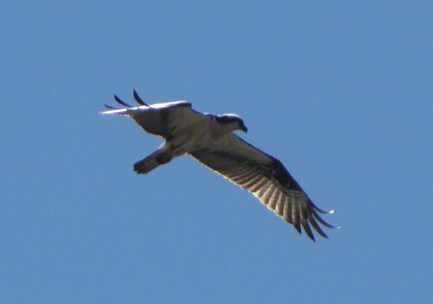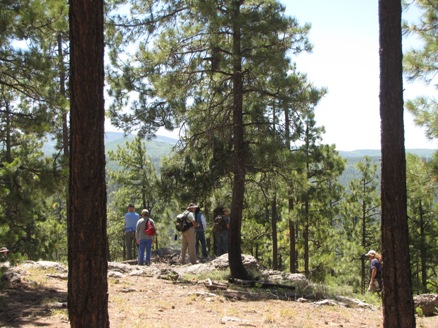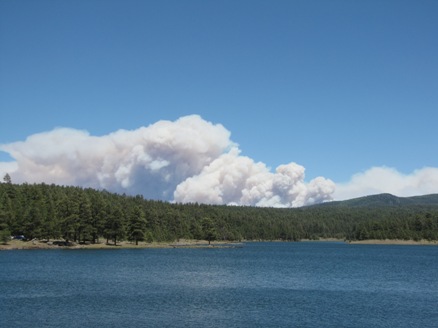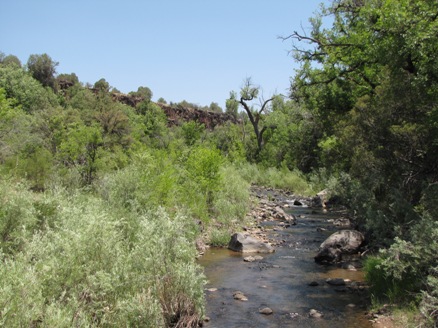Follow the Pack Update, June 15, 2011 (posted 6/25)

As we drove from New Mexico to the 1,600,000 acre reservation in eastern Arizona, we encountered smoke from the huge Wallow Fire burning in the Apache National Forest. The thick smoke burned our eyes and made day seem like late evening. When we reached the reservation late Sunday afternoon, we found we had left the smoke behind us. The air was clear and the sky was deep blue.

We continued our tour at the Kinishba Ruins. This village began as a group of pit houses in about AD800. By AD1325 as many as 400-800 people lived in the village, which by then consisted of about 600 ground-floor rooms. The people who lived in the village are believed to have been the ancestors of today’s Hopi and Zuni people.
In the evening, we enjoyed a picnic of traditional Apache dishes, including acorn stew and fry bread. After dinner, the father and sons of White Mountain Apache tribal wolf biologist, Krista Beazley, sang and played drums.
Ms. Beazley (in the pink shirt) and her daughter danced to the music, with trip participants joining in.
Tuesday morning we got up early to go looking for wildlife. At Hawley Lake we watched two ospreys soaring above the lake. Now and then one of the birds would plunge down to the lake after a fish.
We stopped at a place where photographs of wolves have been caught on remote cameras, called “camera traps.” We placed a camera trap on a tree to see if we could catch a photo of a wolf or other animal.
Then Krista Beazley demonstrated how radio-telemetry works. Using a radio receiver with an H-shaped antenna, you can hear the signals coming from a wolf’s radio collar, helping to locate the wolf.
Back at camp, we learned how to make Apache fry bread, no measuring cups or spoons allowed! Hands are for kneading the dough. After the balls of dough rise, you flatten them between your hands and slip the flattened dough into hot oil. The dough puffs up and turns to hot, delicious, brown, fry bread.
Later, we watched the amazing Apache Crown Dancers, who came all the way from the village of Cibecue to dance for us.

On our way to check the camera trap for photos, we hiked down a road and through the forest. We found a line of wolf tracks, but the sun was too high in the sky to get good photos of the tracks. Before going on to check the camera trap, we hiked to an old den of the Paradise Pack. The den site was among rocks on a steep canyon wall with an amazing view.

After visiting the old den site, we went to check on the camera trap. Unfortunately, the only photo we found when we downloaded the pictures from the camera was a photo of us, walking away from the tree where we fastened the camera the day before. As we drove back to our base camp, we stopped at Hawley Lake to watch the smoke from the Wallow Fire billow up into the sky. We were concerned about all the people and wild creatures whose homes were threatened by the enormous fire.

Although we didn’t see any Mexican gray wolves, we enjoyed seeing the beautiful mountains, meadows, lakes, and streams on the White Mountain Apache tribal lands.
We were thrilled to see wildlife, from the big, black bears to this tiny butterfly.
Most of all, we appreciated the friendly welcome we received from our White Mountain Apache hosts. They made us feel right at home. We would happily sign up for another trip tomorrow.















